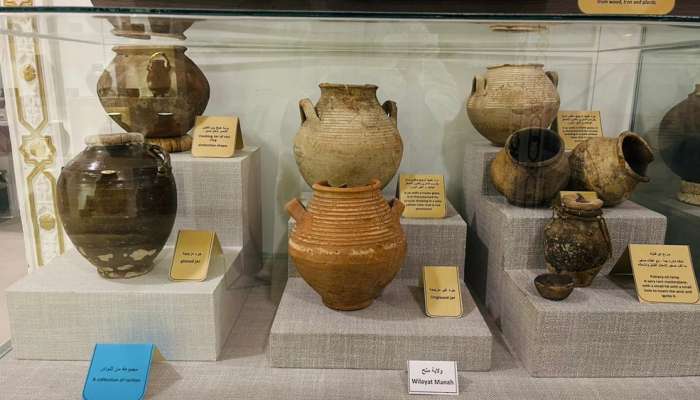
Muscat : Nizwa Museum, which is located in the centre of the Wilayat of Nizwa in Al Dakhiliyah Governorate, provides visitors an opportunity to embark on a journey through history and learn about Omani heritage, culture and civilization.
Mohammed bin Ahmed Ambusaidi, owner and director of the Nizwa Museum, said: "The museum, which is supervised by the General Directorate of Museums at the Ministry of Heritage and Tourism, includes about two thousand exhibited items, divided into 8 carefully selected halls, which are: the Manuscripts Hall, the Weapons Hall, the Human Hall, the Civilizational Communication Hall, the Copper Hall, the Handicrafts Hall, the Pottery Hall, and the Women’s Hall."
Ambusaidi added that the collections distributed in the museum halls highlight the Omani ability to harness nature to enable construction and stability, and focus on the Omani tangible and intangible heritage.
Ambusaidi explained that the museum’s vision aims to improve the heritage tourism system in the Sultanate of Oman in general and the Wilayat of Nizwa in particular.
Nizwa is a major tourist destination in the Sultanate of Oman and plan is to make the museum a centre for cultural radiance and an integrated historic reference for those who wish to explore the depths of Omani history and learn about the ancient population’s collectibles and their various uses.
"The museum also aims to deliver a message to the world about the Omani heritage in all cultural fields, to become a permanent headquarters to serve the community in cultural communication between the past and the present, preserve and restore cultural heritage, and enhance activities in the museum field, such as displaying artifacts and tools used in the manufacture of ancient human heritage," Ambusaidi said.
Regarding the collectibles, Mohammed bin Ahmed Ambusaidi said: "The museum contains nearly two thousand archaeological and heritage pieces, represented by Omani manuscripts dating back more than 400 years, rarities of Omani pottery, handmade Omani copperware, doors, windows, wood with various patterns, colors and shapes, and equipment, machines and materials used in crafts and handicrafts."
Ambusaidi added that the museum has a collection of traditional weapons and their accessories, dating back to the sixteenth century, fossils and artifacts dating back to 260 million years, handicrafts used by ancient residents, and many heritage pieces that tell the story of cultural and commercial communication with other peoples.
--